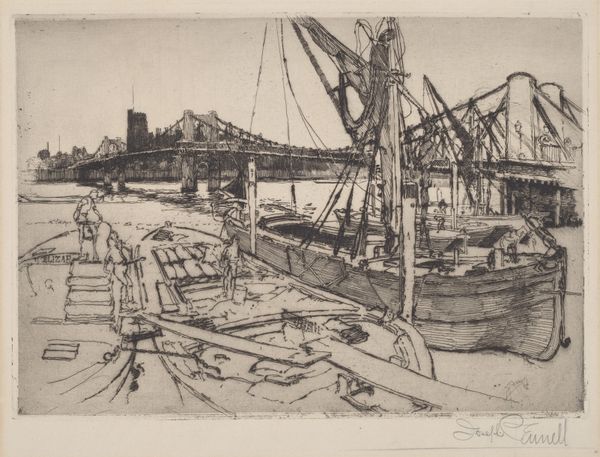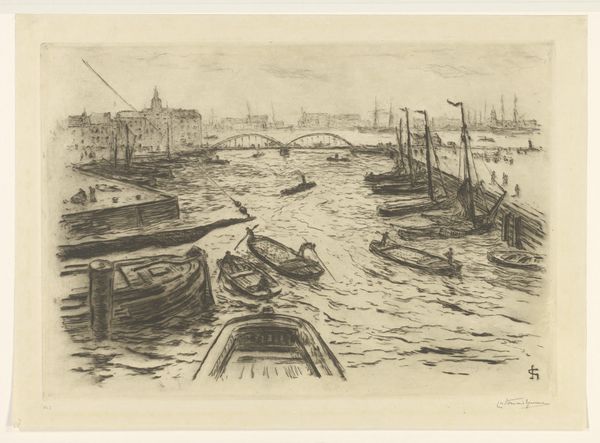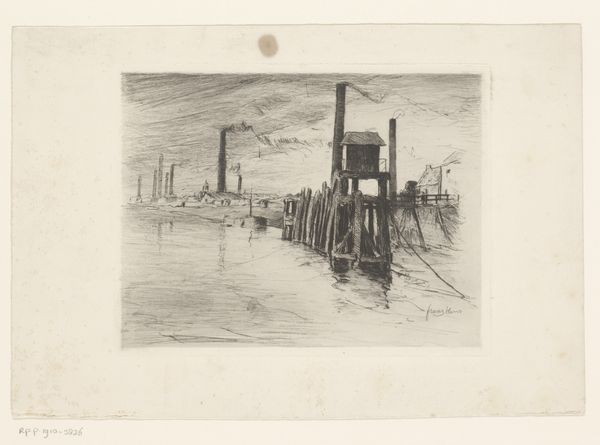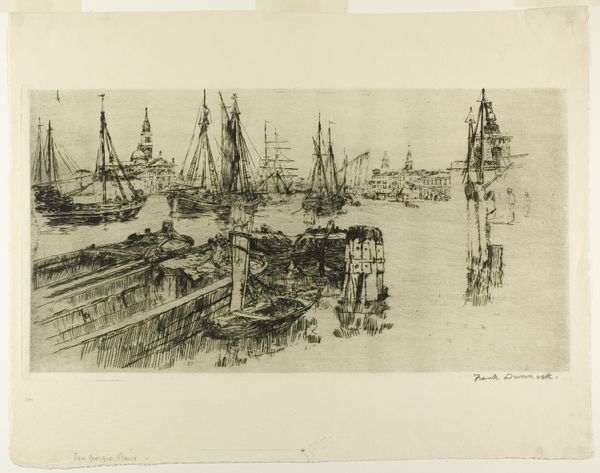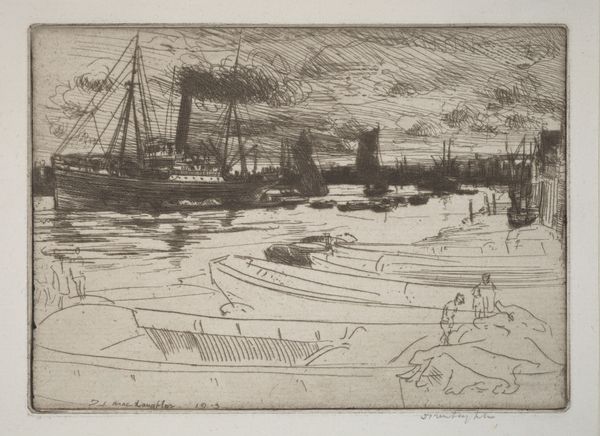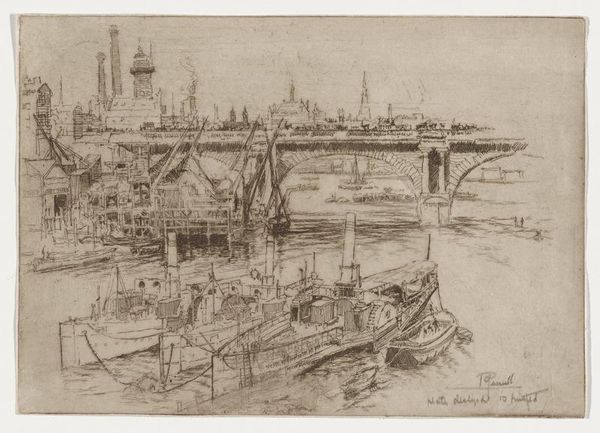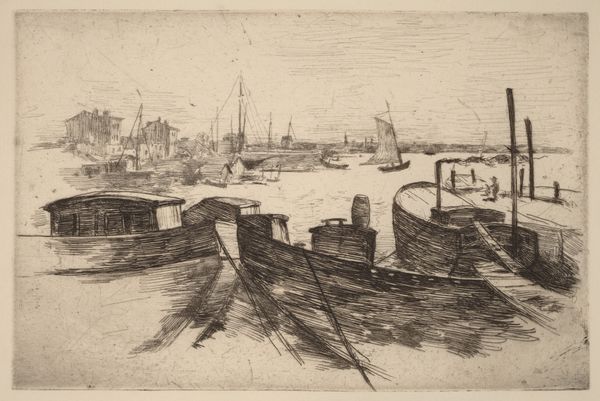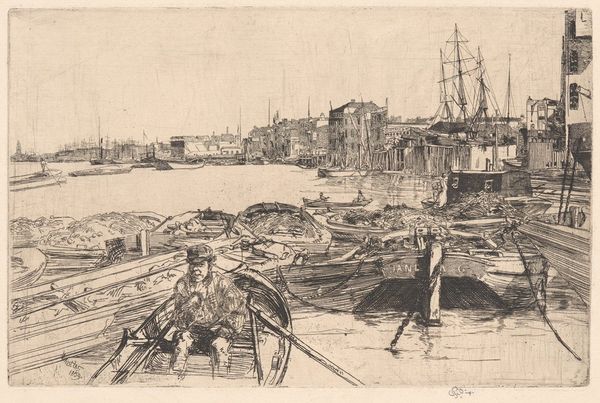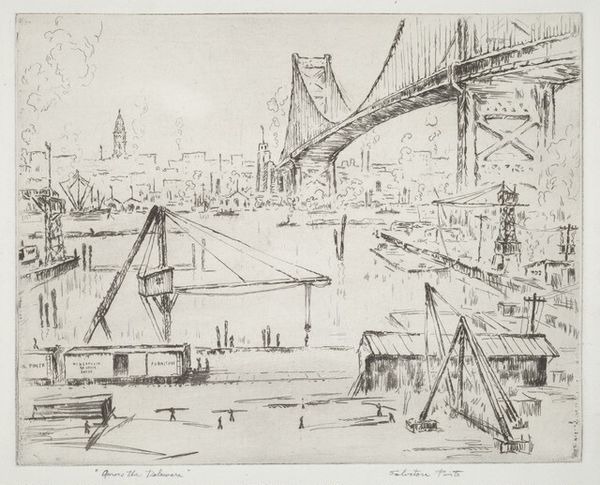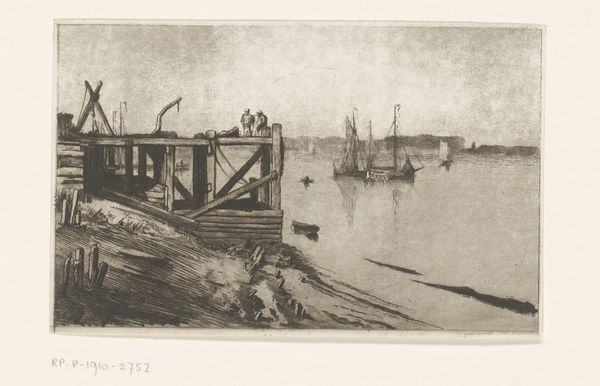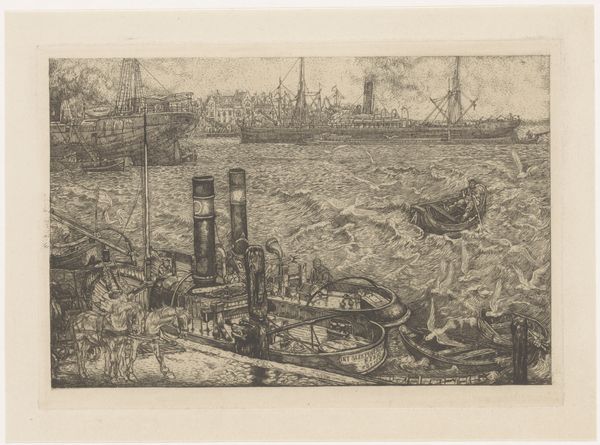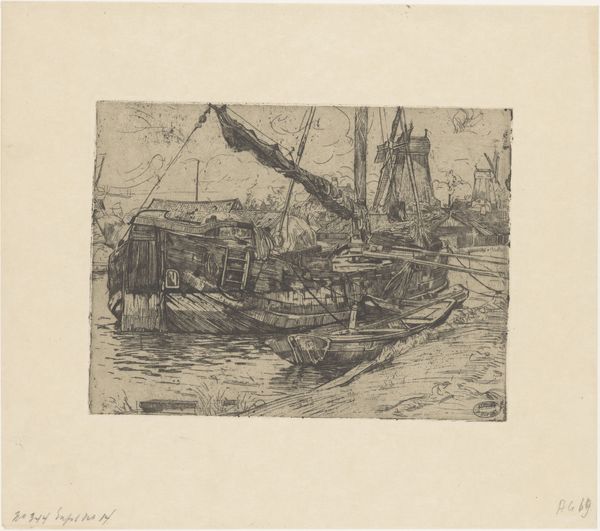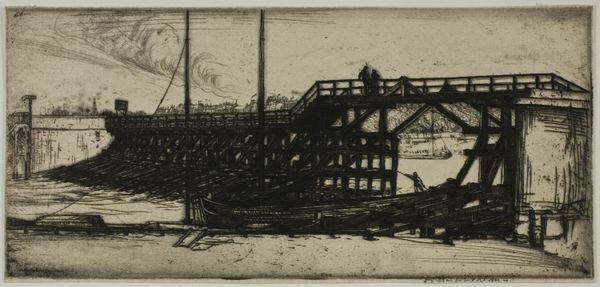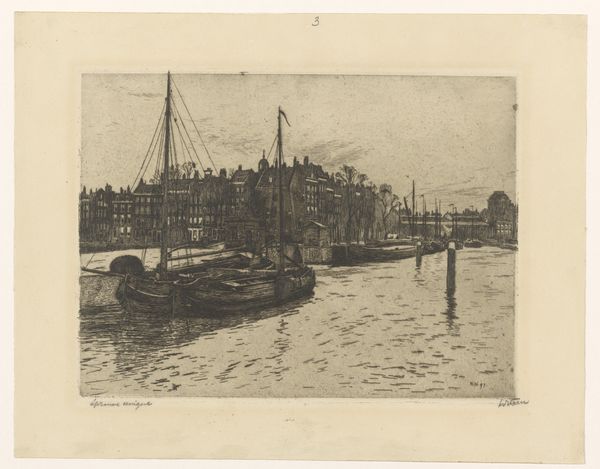
drawing, graphic-art, print, metal, etching, paper
#
drawing
#
graphic-art
# print
#
metal
#
impressionism
#
etching
#
landscape
#
paper
#
cityscape
Dimensions: 177 × 254 mm (image); 220 × 273 mm (sheet)
Copyright: Public Domain
Curator: This is Joseph Pennell's "Chelsea, No. II," an etching from 1886, now housed at the Art Institute of Chicago. Editor: The scene feels busy, doesn’t it? There's a definite weightiness to the foreground; all those stacked wooden beams give it a real sense of materiality and industry. Curator: Yes, and consider Chelsea's symbolic role at the time. It was transitioning rapidly from industrial hub to artist colony. Pennell, being an American expatriate, likely found that shift very intriguing. What visual clues communicate change to us? Editor: It’s all about labor, I think. Notice how the heavy, dark lines detail the barges and the planks, but then become almost impressionistic in the cityscape beyond? Pennell really captures the dirtiness and activity surrounding the river's function as a working artery of London. You almost feel the presence of dockworkers hauling freight, day in, day out. Curator: Exactly. And the bridge looming in the background – it isn’t just a bridge; it's an emblem of modernity, connecting the present and future. It mirrors how the Thames itself carries both commerce and the weight of British history. Notice the cathedral, its pointed arch calling attention to the sacred mixed within a panorama of secular innovation. Editor: Right, and knowing that Pennell trained as a process engineer informs the way I view the sharp linear marks crisscrossing to build form in this print. It reminds me that printmaking shares much with architecture and mechanics. Each etched line bears traces of precise labor and planning. Curator: Very insightful! His commitment to portraying urban landscapes like Chelsea shows us how industrialization and urbanization can inspire both awe and a certain degree of alienation. But overall I'd say this etching succeeds in monumentalizing labor's grandeur within everyday life. Editor: I agree, and by etching his plates Pennell literally consumed them, pressing a statement about the impact that these spaces were leaving in him, which we continue to consume even now. Curator: What a remarkable thing, indeed! Editor: I leave seeing beauty in London's grimy port activity that day, all the better because I got to see that by analyzing its making, end to end.
Comments
No comments
Be the first to comment and join the conversation on the ultimate creative platform.
